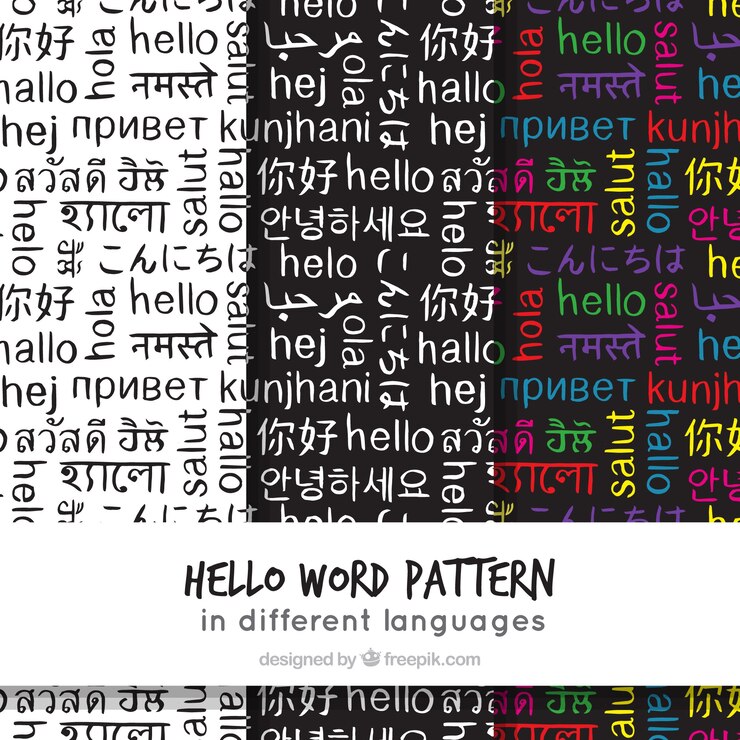Translation and interpretation have been here on this earth since the time when human language was born. These communication pursuits have existed for a long time and thrived through diverse cultures and traditions.
Translating content into various Indian languages is a smart step that allows the content to reach a broader audience and also shows an improvement in content visibility. India has one of the fastest-growing economies. Progress of India in fields like religion, tourism, trade, education, science, business technology etc, has increased the need to diversify. Translation for languages increases the scope of reaching a huge number of people.
Why Is Translation Needed?
As most people want to consume information in their native language, the translation industry is rising in demand in India. Both local and global companies have switched their content strategies for creating content in multiple languages. They want to include regional content for their overall growth. Thus, translating content into various Indian languages in India plays a great role in different sectors, including education, IT, etc.

The world we are living in is being digitalised day by day. It has made a way for different people from different parts of the country to come forward and closer professionally and personally. The rapid growth of communication technology and the growth of the internet have enabled businesses to connect with a huge audience.
The Current Scenario of Translating Content in Various Indian Languages
For example, international companies such as Microsoft, Google, Facebook and many other companies are flourishing in India because they use translation services to reach huge audiences in different parts of India.
What Companies do:
However, MNC companies are outsourcing English to Hindi translation service from India to reach all the audience who has Hindi as their native language. Then, they are outsourcing the English-to-Tamil translation service from India, which focuses on the Tamil-speaking people.
Similarly, they are outsourcing the English-to-Telugu translation service from India and gaining the engagement of most of the Telugu audience. Then, outsourcing English to Kanada translation service from India to reach most of the Kanada audience.
On the other hand, outsourcing English to English-to-Gujarat translation service from India and English to Marathi translation service from India helps to bring better engagement of the targeted audience. This translation has helped International companies flourish so well.
Translation Techniques You Can Apply to Achieve the Best Translation
Translating content in various Indian languages is now rising in demand. On the other hand, international companies are outsourcing translation services from India. They want the English to Hindi translation service from India, along with translations in Tamil, Telugu, Kannada, Gujarati, etc. So, these techniques help a lot in the translation of content.
Direct Translation Techniques:
Many companies use these translation techniques mainly when the structure and concept of the source can be used in the targeted language. Literal translation is the bottom line of direct translation techniques. Other types include borrowing and calque.
1. Borrowing:
It is a very common translation technique. In this, a word that originated in a particular language is being used in another, even by the people who don’t even speak the ‘lending’ language. In the case of clothing and food, this technique is often used when it has no target language and helps to pressure the cultural context of the source text.
You can find English loaded with borrowed words. However, that has become a part of our daily language. If the borrowed term has to enter a common usage, then it’s usually written in Italics.
For example: cafe (French), hamburger ( German). However, this technique can broadly be chosen for translating content in various Indian languages.
2. Calque:
Translation experts define the calque technique as a word-for-word translation from one language to another. It is also known as the Loan Translation Technique.
For example, if you take a Hindi phrase and then literally translate root to root or word to word in English, that’s a Claque. In English, we see a lot of examples of common phrases which are claque from another language. This makes translating content in various Indian languages easier.
3. Literal Translation:
In casual terms, people call it word-for-word translation. This translation closely follows the form of the source language. In this translation technique, the form is as important as the content.

While using literal translation, each and every word is translated directly. The actual text should be idiomatic and retain the same word order, style, and meaning as the source text. Hence, this is a wonderful translation technique for translating content in various Indian languages.
Indirect Translation Techniques:
The other name for Indirect translation techniques is the Oblique translation technique. EdTech companies use these techniques when there are different cultures and different languages. These techniques change the conceptual elements and structure by preserving the nuance and meaning of the text.
1. Transposition:
The transposition translation technique basically shifts one grammatical category from another without changing the meaning of the text. It totally preserves the actual meaning. Regional content development experts often use this technique between languages with different grammatical structures.
2. Modulation:
Translating content in various Indian languages in modulation translation technique gives a change to the perspective by adjusting the text without changing the meaning so that it expresses the actual idea. It conforms to the natural pattern of the target language.
3. Equivalence/Reformulation:
This translation technique is similar to the Modulation translation technique, which preserves the meaning of the text without changing the idea and meaning of the text. This technique is essential for translating content into various Indian languages.
4. Adaptation:
Content experts call the adaptation translation technique the Cultural Substitution translation technique. It is a very important translation technique. It is a must when anything specific to one language culture is expressed totally in a different way that is familiar to another.
5. Compensation:
The compensation translation technique is basically the replacement of untranslatable elements of the source text with similar elements that compensate for the loss of information and are able to produce a similar effect on the reader of the target text.
6. Reduction:
Reduction is a translation technique that shorts up the world without changing the actual meaning. It removes any word from the text to shorten it without any change in the meaning of the text.
7. Expansion:
The expansion translation technique is just the opposite of the reduction translation technique. Here, translators add words to the text by preserving the meaning. This can be due to differences in grammar terminology and sentence structure.
Final Words:
There are 22 official languages spoken and more than 1000 native languages in India. So, to ensure an ed-tech company’s growth, translating content into various Indian languages is much needed and is important.
As most of the people in India have gained access to the internet, the need for content in the local language is growing. Breaking the language barrier is a must to reach a wider audience to gain popularity and loyalty. However, if you plan to opt for translating content, hire reliable translation experts. Thus, you can ensure first-class translation services to meet your requirements.
Wondering how to choose the right localisation service for your EdTech company? Click here.



Comments 0